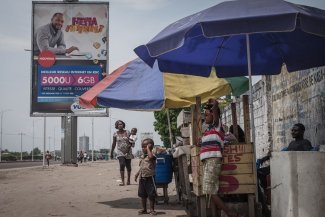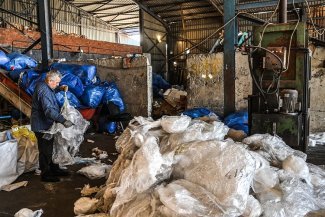Whilst farmers in the middle and northern part of the country always welcome the coming of the rainy season, people living in Ghana’s capital city of Accra and other parts of the country dread the yearly rains around June and July. Flooding in Ghana is a huge, recurring issue.
In a day that will go down in infamy in Ghanaian history, on 3 June 2015 some 165 men, women and children died in horrifying circumstances when heavy rains caused an explosion at a petrol station, killing bystanders as well as those who were seeking shelter from the rain. It became known as Ghana’s Black Wednesday with the government declaring three days of national mourning.
In the wake of the tragedy, Ghanaian President John Dramani Mahama made US$13 million available to fix the roads and drains destroyed by the floods, as well as to cover some of the medical expenses of the surviving victims.
Thankfully, the government appears to have learnt some lessons from last year’s tragedy.
This year, in Accra at least, heavy rains were offset by the dredging and desilting of the main storm drains that direct rain water into the sea. Yet more than 10 people have lost their lives across Ghana (including at least one person in Accra) since 9 June when 185mm of water – a month’s worth – fell in one day.
The causes of flooding in Accra and other parts of Ghana are numerous. With the city losing more than 95 per cent of its vegetation cover to the built environment, this has reduced the surface area previously available to absorb rain water.
Then, there is Ghana’s drainage system, which is no longer fit for purpose. Approximately 95 per cent of drains in Ghana are open and many people use them to dump rubbish which in turn causes blockages.
In addition, Accra’s geographical position in a coastal savannah zone means that it is susceptible to heavy rains, although recent extreme weather events have been exacerbated by climate change.
“A natural cause of flooding in some cities and towns in the country is the topography of the lands. In cities such as Accra, most parts are low lying and flat in nature. Such areas become submerged anytime they experience heavy rains. Silted and choked drains also account for these mishaps,” Isaac Addei, a development planner at the University of Mines and Technology, Tarkwa, tells Equal Times.
But poor planning also has a part to play in the recurring damage caused by flooding in Ghana, says urban planner David Acheampong from the Kwame Nkrumah University of Science and Technology in Kumasi.
“The inability of the city authorities to engineer a proper fluid sewage system accounts for the main reason why Accra gets flooded even with minimal downpour.” He says it is not too late for the local and federal governments to take action. “If Amsterdam, a city, whose elevation is below the sea level, does not get flooded with 100mm of rain, then Accra which is above the sea level should not get flooded needlessly,” he says.
The floods have taken their toll on Accra with most traders shutting their shops and closing their stalls with even the smallest hunch of rain. A number of traders have also been dislodged from their places of trading.
“We used to make enough sales. However, since we are prevented from selling at the former place, the volume of sales have gone down considerably,” says Constance Lamptey, a street vender at the Kwame Nkrumah Circle in downtown Accra.
“We are hoping that the rainy season will end and we can go back to the old place again”.









